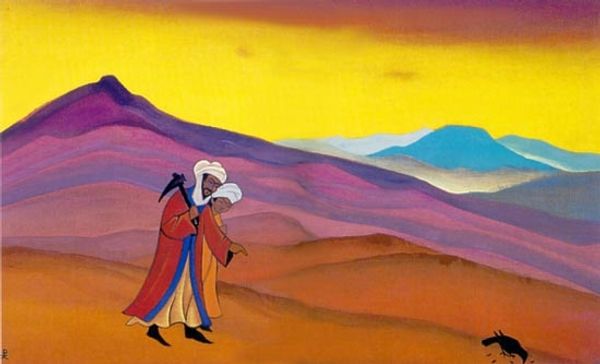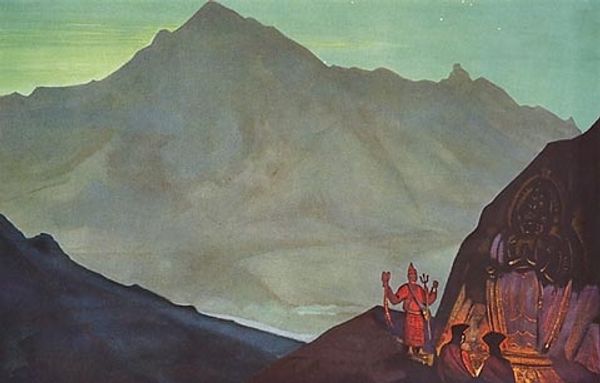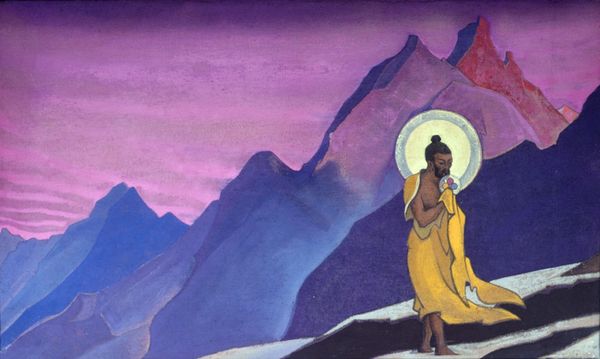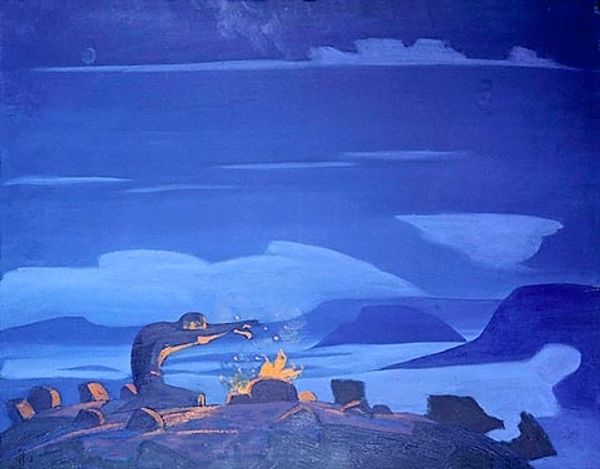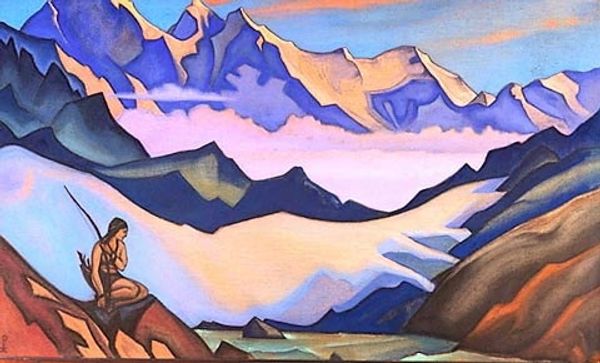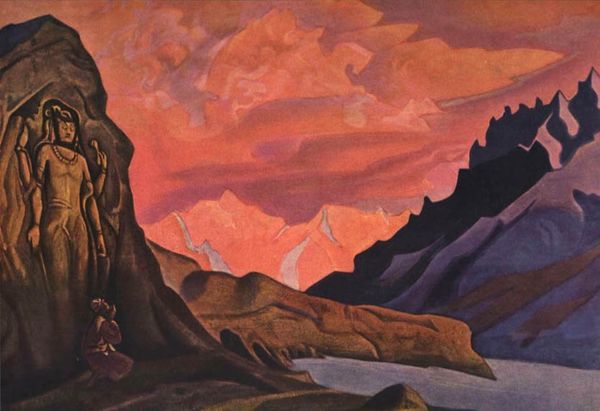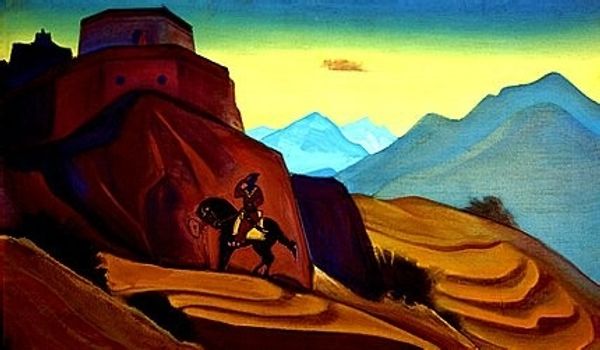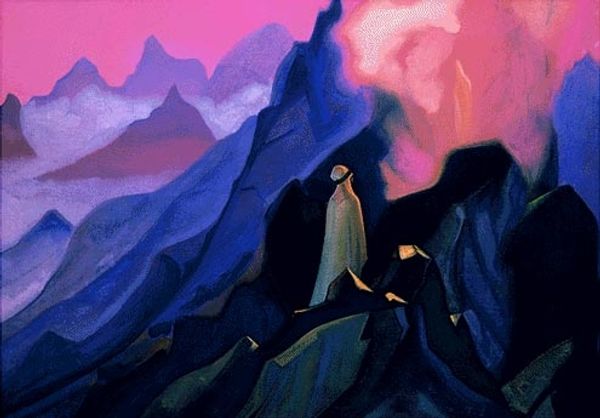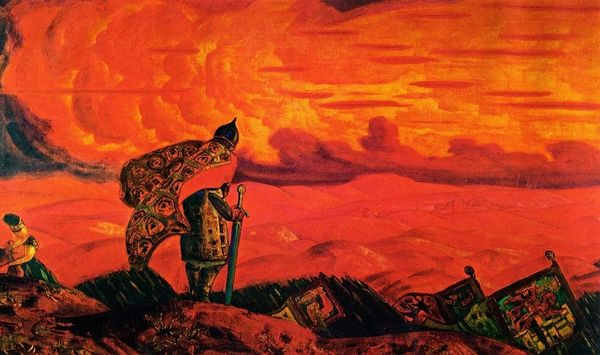
Dimensions: 45.7 x 78.7 cm
Copyright: Public domain
Curator: Nicholas Roerich painted "Iskander and Hermit" in 1938, using tempera on canvas. We're looking at an intriguing meeting between a historical figure and a symbol of spiritual withdrawal. Editor: Wow, the color palette is the first thing that grabs you. Those intense blues of the mountains... they feel so majestic, almost otherworldly. But there’s something melancholic about the hermit's pose; he's shrouded in shadow, while Iskander sits in golden light offering something... perhaps a challenge? Curator: Precisely. Roerich was deeply interested in Eastern philosophy and history. Here, Iskander, a figure often associated with Alexander the Great, encounters a hermit. It raises questions about power versus enlightenment, action versus contemplation, themes consistently present in Roerich’s oeuvre. The contrast isn’t just visual; it’s a dialogue between different modes of being. How might we interpret it through postcolonial studies? Editor: It’s that dialogue that gets me too! Like, Iskander’s offering could be read as, "Hey, check out what the material world has to offer!" But the hermit’s detachment could represent a deeper kind of wisdom. What I wonder is what would a viewer who has never engaged with Eastern philosophy feel? Does this work require a prior understanding to resonate emotionally? Curator: An important consideration. We must be mindful of potential Orientalist tropes. Roerich's vision, while seemingly reverent, also essentializes 'the East' as a space of mysticism and spiritual seeking, perhaps eclipsing the complexities of lived experiences. Does his painting offer genuine intercultural dialogue or reproduce a hierarchical gaze? Editor: It's a tightrope walk, right? Because there is undeniably beauty here. But the layers...the "hermit," the fauvist leanings… you start peeling them back and it becomes a maze of intent. I like that. It's a wrestling match in paint! The tension hangs between those peaks and those figures. Curator: A wrestling match that continues today. In revisiting Roerich, we must question not only his artistic choices, but our own positions as viewers engaged in the perpetual task of meaning-making. Editor: Right, this little painting makes you question all your answers, I like that. Now I’m ready to grab my backpack and head for those vibrant, spiritual mountains!
Comments
No comments
Be the first to comment and join the conversation on the ultimate creative platform.
